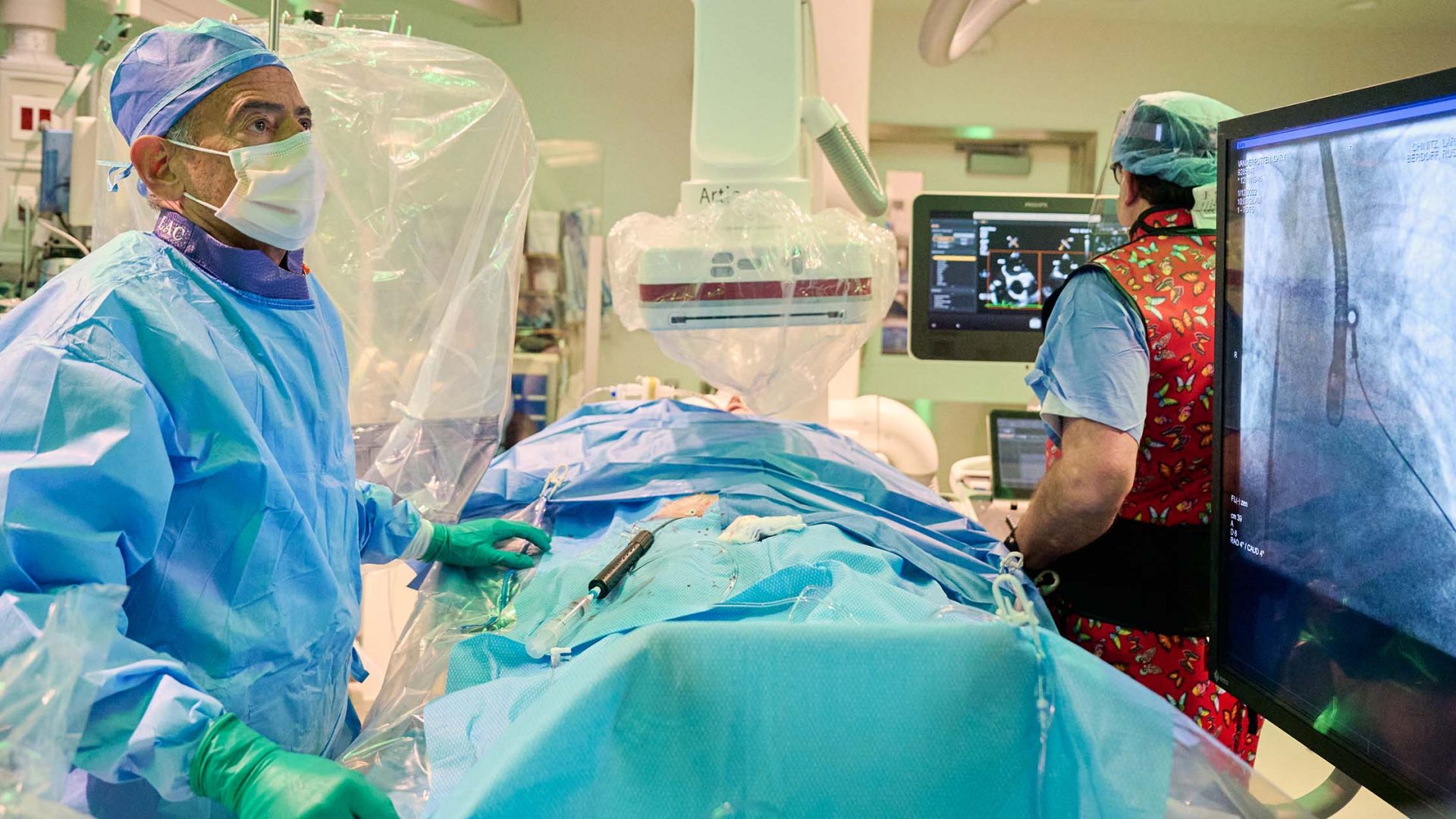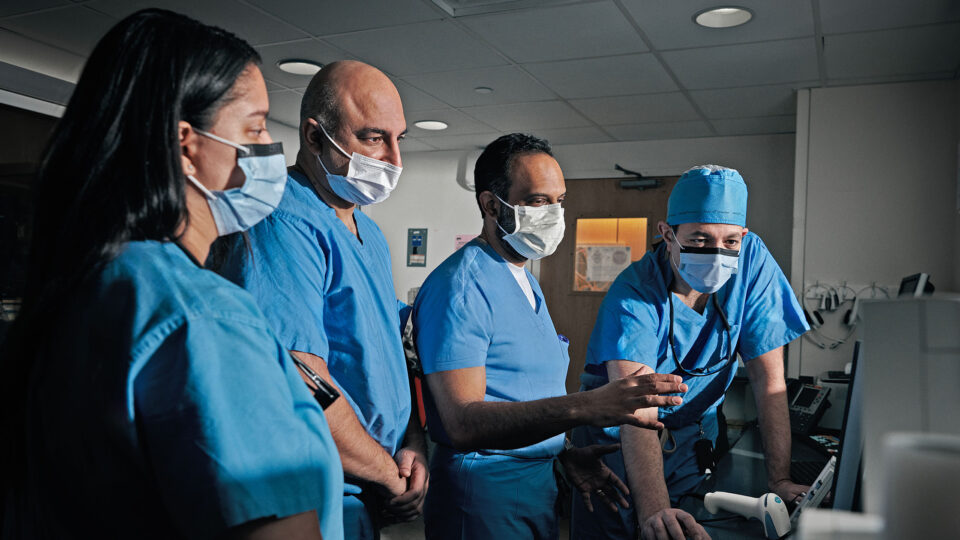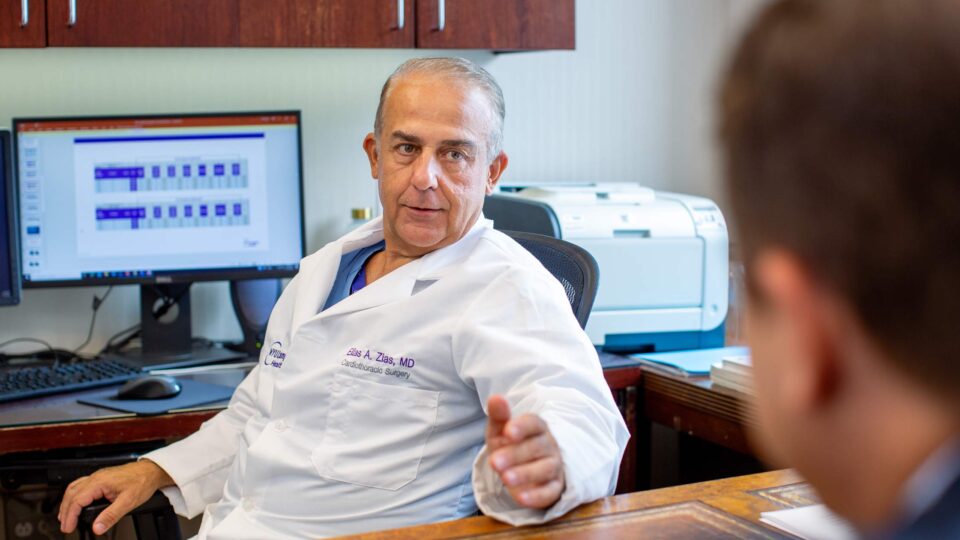Catheter ablation has long been recognized as an effective treatment for a wide variety of cardiac arrhythmias, but the therapy runs a risk of damage to surrounding tissues. Pulsed field ablation (PFA) is emerging as a novel, non-thermal energy source that may offer a safer alternative to conventional catheter ablation technologies.
PFA delivers ultrashort, high-voltage pulses to create lesions on targeted tissue. This mechanism is also known as electroporation because it causes temporary pore-like openings in cell walls, leading to death by apoptosis. The frequency of the pulses can be adjusted to target specific proteins within cell membrane, leaving other types of tissue unharmed.
“PFA offers the hope for an energy source that is instantaneous, efficacious, and specific to the heart.”
Larry A. Chinitz, MD
“With traditional energy sources, we spend much of our time trying to avoid collateral damage to the nerves, blood vessels, lungs, or esophagus,” says Larry A. Chinitz, MD, director of the Heart Rhythm Center. “PFA offers the hope for an energy source that is instantaneous, efficacious, and specific to the heart.”
Investigating PFA for Atrial Fibrillation
Previously used in oncology to destroy specific types of tumors or to increase tumor permeability to chemotherapy drugs, PFA has recently been adapted for catheter ablation by a number of manufacturers. European regulators approved the first such device in January 2021, but the technology remains investigational in the U.S. NYU Langone is currently conducting clinical trials of three different PFA cardiac ablation devices in patients with atrial fibrillation.
“There are many ways to deliver this energy,” Dr. Chinitz explains. “We’re trying to find out the best way to do it.”
Numerous questions about the new technology remain, including how durable are the lesions that PFA produces, the safety compared with conventional counterparts, and which of the available catheters is optimal for a given application, such as paroxysmal versus persistent atrial fibrillation.
Across the three trials testing devices developed by Medtronic, Farapulse, and Biosense Webster, primary outcomes include primary adverse events such as atrial-esophageal fistula and cardiac tamponade/perforation within 7 days, and freedom from documented atrial arrhythmia, atrial tachycardia, or atrial flutter for up to one year.
Secondary outcomes include the number of patients who achieve acute procedural success, defined as confirmation of entrance block in targeted atrial pulmonary veins after adenosine/isoproterenol challenge, and change in quality of life after ablation.
Ripple Effect Across Cardiac Ablation
If the early results from the PFA trials hold up, Dr. Chinitz expects the Heart Rhythm Center will be among the first to adopt the devices. NYU Langone is one of the world’s largest centers for the treatment of complex arrhythmias and a pioneer in transformative treatments.
“It’s still too soon to know whether this technology will live up to those expectations. If it does, it’s likely to change the field of catheter ablation dramatically.”
“Many feel that PFA will replace radiofrequency and cryoablation as the premier energy source for cardiac ablation,” Dr. Chinitz notes. Eventually, it could be adapted beyond atrial fibrillation to other arrhythmias, including those involving the ventricles.
“It’s still too soon to know whether this technology will live up to those expectations. If it does, it’s likely to change the field of catheter ablation dramatically,” Dr. Chinitz says.






